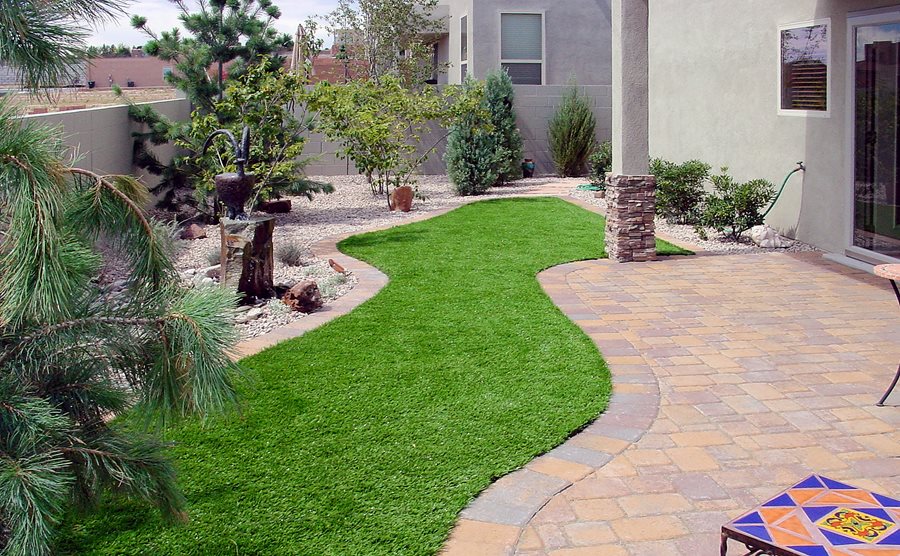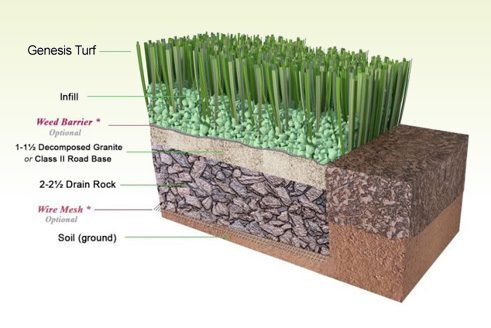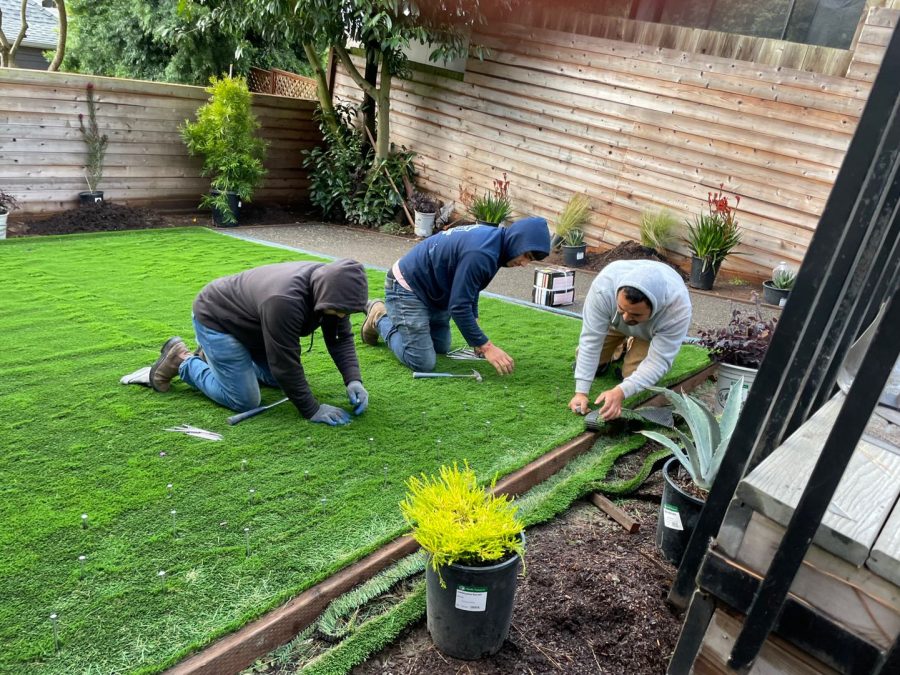Weather-Resistant Arizona Artificial Turf for Home and Commercial Applications
Weather-Resistant Arizona Artificial Turf for Home and Commercial Applications
Blog Article
Explore the Environmental Benefits of Opting for Synthetic Grass Solutions
The adoption of fabricated lawn options presents an engaging opportunity to resolve pressing environmental challenges. By substantially decreasing water usage and reducing the application of harmful chemicals, these options not just promote lasting landscape design but additionally secure regional ecosystems. Additionally, the reduced carbon impact related to decreased maintenance activities contributes to a much more lasting technique to land monitoring. The implications of these benefits extend beyond simple preservation initiatives, elevating questions concerning their long-lasting impact on habitat preservation and total environmental equilibrium. Discovering these dimensions exposes an intricate interaction worth taking into consideration.
Water Preservation Conveniences
Among one of the most significant benefits of synthetic grass is its capacity to save water. Conventional turf lawns call for substantial irrigation, particularly in locations prone to dry spell or water restrictions. In contrast, fabricated turf does not need watering, dramatically minimizing the total need for water sources. This attribute is especially valuable in arid areas where water shortage is a pressing worry.
By eliminating the requirement for normal watering, artificial lawn adds to sustainable landscape practices and aids mitigate the environmental influence of excessive water intake. The conservation of water expands to the reduction of drainage, which can lead to soil disintegration and waterway contamination.
Additionally, the installment of synthetic grass enables homeowners and communities to assign water resources a lot more effectively, concentrating on important uses such as drinking water and agriculture. The shift towards synthetic grass not just advertises liable water use yet likewise aligns with more comprehensive ecological objectives intended at protecting natural sources.
As areas progressively prioritize sustainability, the water conservation benefits of synthetic grass offer a compelling situation for its adoption in commercial and property landscaping tasks.
Minimized Chemical Use
The change to synthetic turf dramatically reduces the reliance on chemical therapies generally utilized in all-natural grass upkeep. Conventional grass administration typically includes the application of fertilizers, herbicides, and chemicals to advertise development and control parasites. These chemicals can present dangers to human health, regional wild animals, and the setting, adding to soil and water contamination.
In contrast, artificial turf gets rid of the demand for these unsafe substances. By decreasing the release of synthetic substances right into the environment, fabricated lawn promotes much healthier dirt and water systems.
In addition, the absence of chemical runoff connected with synthetic grass installations assists protect neighborhood rivers from air pollution, sustaining water life and maintaining biodiversity. Arizona artificial turf. As communities significantly focus on sustainable practices, opting for synthetic grass presents a sensible service that aligns with ecological conservation goals. With this change, homeowner can enjoy lavish environment-friendly areas without jeopardizing ecological wellness, leading the means for a more sustainable future
Reduced Carbon Impact

Moreover, the installation of man-made grass can result in considerable water preservation. All-natural yards need considerable quantities of water for irrigation, which not only includes to the carbon impact related to water removal and therapy but also pressures local water resources. On the other hand, synthetic grass requires marginal maintenance, needing no watering, consequently considerably lowering water usage and its associated energy expenses.
In addition, the longevity of synthetic grass contributes to its decreased carbon effect. With a life expectancy of approximately 15 years or even more, the demand for constant substitutes is diminished, causing less waste and reduced power intake in production and getting rid of standard grass options. Generally, fabricated lawn offers a sustainable alternative for eco mindful landscaping.
Environment Conservation
Habitat preservation is a crucial consideration in the discussion over landscaping choices, especially when comparing synthetic grass to redirected here natural turf. All-natural grass lawns commonly require substantial upkeep, including the usage of fertilizers, chemicals, and herbicides, which can adversely influence neighborhood ecosystems. These chemicals can seep into the soil and waterways, hurting native vegetation and animals and interfering with neighborhood environments.
Fabricated grass gets rid of the demand for harmful chemicals, consequently securing neighboring wild animals and keeping the honesty of surrounding ecosystems. The installment of fabricated grass can lead to the conversion of previous lawn areas into more biodiverse landscapes, such as pollinator gardens or indigenous plant areas, which can support local wild animals.
Eventually, the transition to fabricated lawn not only preserves water and decreases upkeep initiatives yet also fosters a more unified connection in between human activities and the natural setting, promoting habitat conservation in the procedure.
Long-Term Sustainability
Lasting sustainability is a crucial aspect in assessing the benefits of fabricated turf over conventional yard yards. One of the most considerable benefits of artificial turf is its sturdiness; it can last approximately 15-20 years with very little upkeep, whereas see here all-natural turf needs regular reseeding and substitute. This durability reduces the requirement for constant resources, such as water, fertilizers, and chemicals, which are crucial for preserving a healthy and balanced turf lawn.
In addition, man-made turf adds to a reduction in carbon exhausts associated with yard treatment equipment. Standard lawns typically call for gas-powered lawn mowers, leaners, and blowers, every one of which add to air pollution. Arizona turf. In contrast, artificial lawn eliminates the requirement for such tools, promoting a cleaner atmosphere
In addition, the production of fabricated turf progressively uses recycled materials, improving its sustainability account. As manufacturers embrace eco-friendly practices, the ecological impact of synthetic grass remains to diminish.

Conclusion
The adoption of synthetic lawn options offers significant environmental advantages, including substantial water conservation, minimized dependence on hazardous chemicals, and a reduced carbon impact. Man-made turf aids in maintaining natural environments by lessening land disruption and advertising long-term sustainability through the use of resilient products. Collectively, these aspects underscore the potential of artificial grass to add positively to ecological wellness and use a practical option to traditional landscaping practices in a significantly resource-conscious world.
In contrast, go right here artificial grass does not require watering, substantially decreasing the overall need for water sources. By reducing the launch of artificial substances into the ecosystem, synthetic lawn promotes much healthier dirt and water systems.
Moreover, the installation of man-made grass can result in considerable water preservation. In comparison, man-made grass requires minimal maintenance, calling for no watering, consequently considerably reducing water use and its associated power expenses.

Report this page